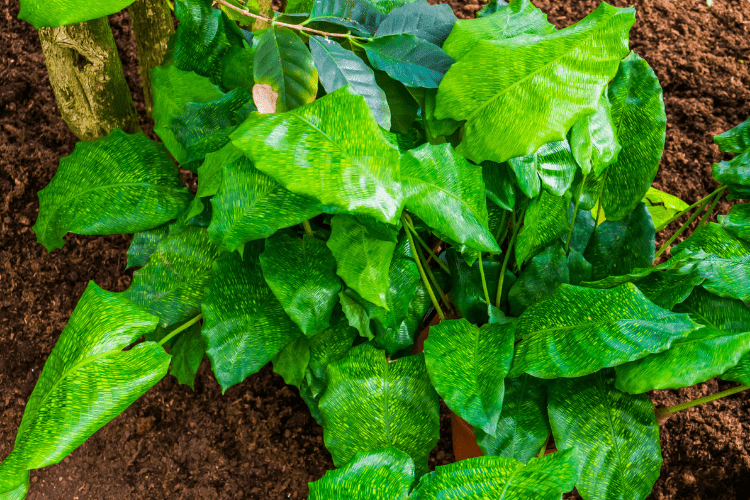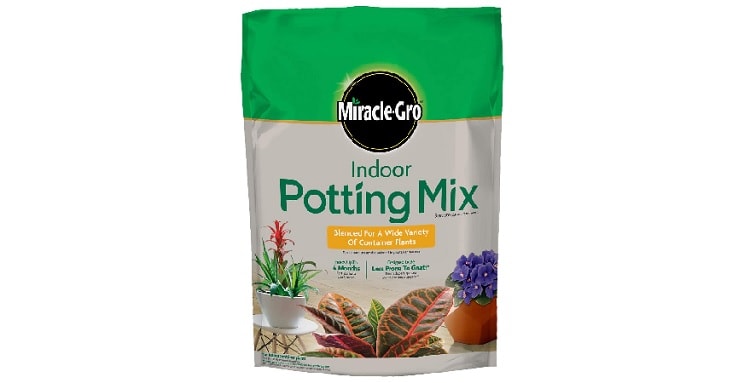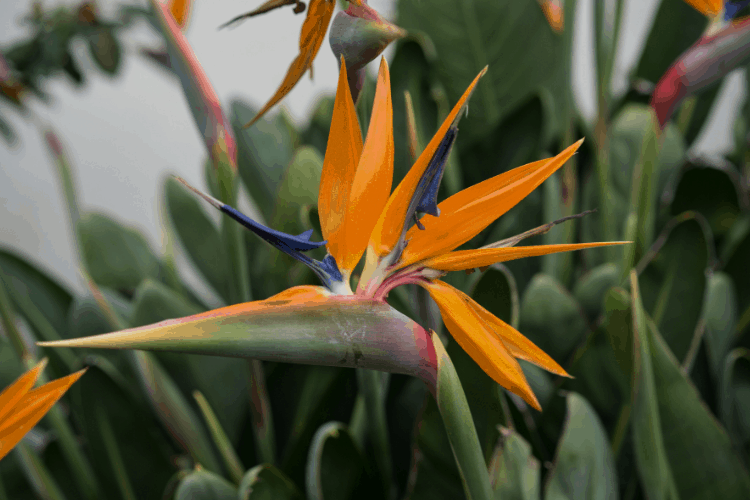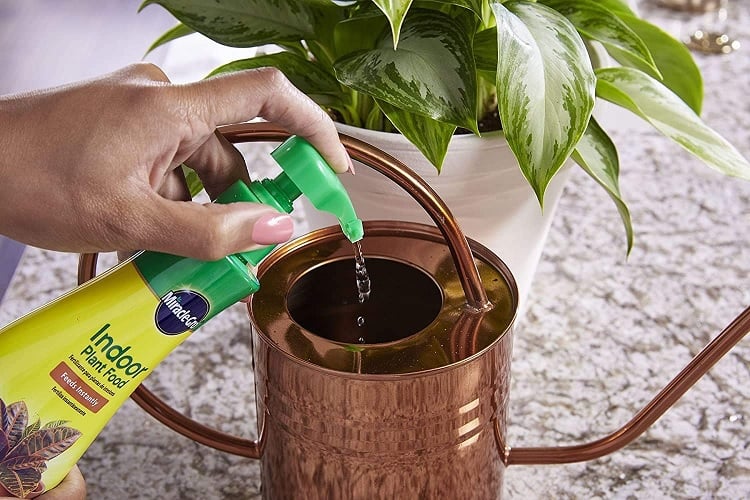- Ficus Pumila: Is This Vining Plant Too Needy For Your Time? - August 29, 2021
- Peperomia Frost: Why Peperomia Caperata Is The Perfect Indoor Plant - August 19, 2021
- Wax Begonia: Can Begonia Semperflorens Survive At Home? - August 18, 2021
The Calathea Musaica has the same signature features as the other Calathea plant, with its own unique characteristics. In this post, we’ll be exploring what makes the Calathea Musaica unique, alongside the essential Calathea knowledge that will help you grow a healthy Calathea Musaica.
After reading, you’ll be able to identify the Calathea Musaica from other Calatheas. And you’ll know how to correctly care for the Calathea Musaica, so it grows up happy and healthy.
How to Identify Calathea Musaica
The Calathea Musaica has a more subdued appearance compared to other Calatheas. Unlike the Calathea Dottie or Calathea Freddie, the Calathea Musaica has an understated coloring and pattern. The long oval leaves on the Calathea are vibrant green with a small mosaic-like pattern.
A healthy Calathea Musaica can grow up to three feet tall and two feet wide.
How to Grow Calathea Musaica From Seed

Growing the Calathea Musaica from seed requires certain growing conditions and essential equipment.
Method:
- Combine a 1:1 ratio of coarse sand and peat
- Place this mixture in a pot or propagation tray
- Moisten the soil with filtered water
- Place the Calathea Trio seeds 0.5-1 cm deep
- Cover the tray with a propagation cover or plastic cover
- Ensure the soil remains moist at all times
- When the seedlings reach 3-4 cm, repot them in individual pots
How to Propagate Calathea Musaica
If you have a mature Calathea Musaica, you can propagate your plant to create more Calatheas. If you’re interested in propagating and growing a Calathea Musaica from propagation, follow these steps:
- Remove your mature Calathea Musaica from its pot
- Loosen the roots gently using your fingers
- Using a sharp pair of shears, cut a clump of root and leaves from your Calathea
- Plant your cuttings in a well-draining pot with fresh soil
- Water your plant’s soil until its moist
- Keep your Calthea Musaicas in indirect sunlight
- Ensure the water remains moist
Calathea Musaica Growing Conditions
Calatheas are native to tropical environments, meaning they have specific growing conditions.
How to Plant Calathea Musaica

Planting the Calathea Musaica is a relatively simple process. By following our guidance, you’ll be able to plot and grow a healthy and happy Calathea Musaica.
Calathea Musaica Potting & Soil
Tropical plants need well-draining soil. Because the Calathea Musaica requires lots of watering, a well-draining soil helps ensure the Calathea Musaica doesn’t get overwatered. A plant pot with draining holes can also promote a healthy draining system and stop your Calathea from drowning.
Calathea Musaica Water Requirements
Water your Calathea Musaica every five to ten days. Before watering the Calathea, check the condition of the soil. If the Calathea soil is wet, hold off on watering. Calathea Musaica soil should remain moist at all times.
Misting your Calathea Musaica with a plant mister can improve humidity levels and keep your Calathea leaves fresh.
Calathea Musaica Light Requirements
The Calathea Musaica enjoys bright, warm indirect sunlight. Position your Calathea in an area in the home that has significant levels of light exposure throughout the day.
Best Calathea Musaica Fertilizer
Like other Calatheas, the Calathea Musaica doesn’t need fertilizing. Some Calathea owners choose to use fertilizers to promote plant growth. If you decide to use a chemical fertilizer on your Calathea, make sure you treat your plant in spring and summer as these are peak growing months.
Best Calathea Musaica Companion Plantings

The Calathea Musaica is native to tropical environments. The plant can only survive outside if the climate is tropical. If you’re lucky enough to live in one of these environments, the Calathea Musaica enjoys being surrounded by other similar tropical plants.
If you keep your Calathea potted inside the home, you don’t need to worry about the companion plants surrounding your individual Calathea Musaica.
Calathea Musaica Diseases and Common Problems
Limp Stem
If you live in a cold environment, your Calathea Musaica may develop a limp stem. A limp stem occurs when your Calathea Musaica is too cold. To help your Calathea, position in an area with more sunlight.
Falling Leaves
Falling leaves means your plant is dehydrated. Make sure you keep up with your plant’s water requirements and begin misting your plan to rehydrate it. You can also try immersing your Calathea in a large body of water several times before repotting it in fresh soil.
Pests
Spider mites, aphids, mealybugs, scale insects, fungus gnats, root-knot nematodes, burrowing nematodes and slugs are all common Calathea pests. Out of all these potential pests, spider mites are the most common. If your Calateha Musaica develops spider mites, you can use neem oil to treat it.
Aphids are the second most common pest on the Calathea Musaica. However, these are less common on indoor Calatheas. To treat these pests, you can use neem oil or Mite-X. To remove pests from your Calathea without chemicals, trickle a stream of water over the body of your plant. If this fails, you can purchase a chemical pest remover. Finally, always move a plant with pests away from your other plants.
Discolored Leaves
If your Calathea leaves are fading, this suggests your plant lacks nutrients. To improve the health of your Calathea, begin using small quantities of plant fertilizer.
Calathea Musaica Treatments and Maintenance

The Calathea Musaica doesn’t demand any treatments or maintenance. Some plant owners choose to use chemical fertilizers and misters to promote the health of their potted plants, but these are not essential.
Where to Buy Calathea Musaica Seeds Online
If you’re familiar with our other Calathea posts, you’ll know that Calathea Musaica seeds are notoriously hard to track down. If you consider yourself a green-fingered individual, you might want to grow your Calathea Musaica from seed. Here are some websites you can purchase Calathea Musaica seeds:
- Green Seed Garden (mixed Calathea seeds)
- eBay (mixed Calathea seeds)
FAQs
Question: Is the Calathea Musaica Toxic?
Answer: No! The Calathea Musaica is such a perfect plant because it’s non-toxic to animals and people!
Question: Is Calathea Musaica a Prayer Plant?
Answer: Yes. The Calathea Musaica is a prayer plant. In the mornings, the Calathea Musaica spreads open its leaves to absorb sunlight. At night, the Calathea Musaica leaves close up, giving the illusion of praying hands.
Question: Will I Need to Repot my Calathea Musaica?
Answer: The Calathea Musaica doesn’t demand repotting often. It’s likely you’ll have to repot your Calathea Musaica a handful of times during its lifetime. Make sure you repot your plant in the spring and summer months.
Where to Buy Mature Calathea Musaica Online
Many plant owners prefer buying their Calatheas mature. Here are some locations you can purchase the Calatha Musaica online:

